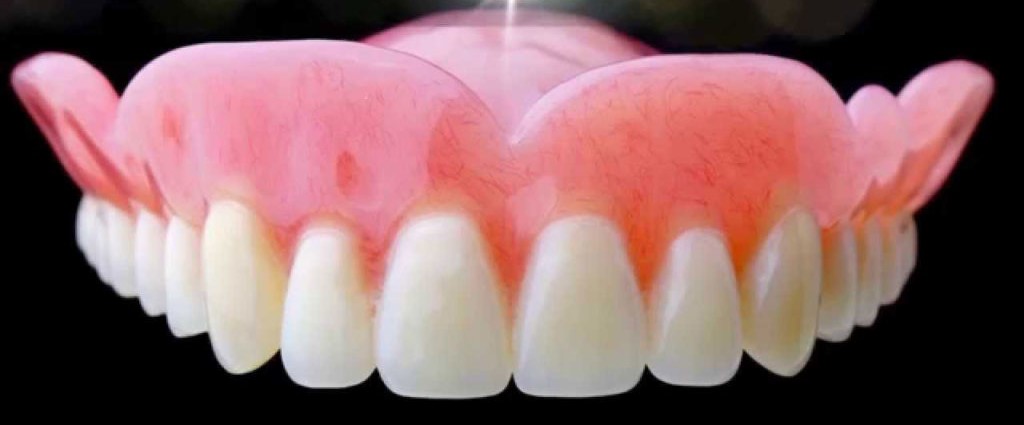Dentures

Dentures are removable teeth typically reserved for those that have had a number of dental issues throughout the years and can no longer rely on their original set of teeth. Dentures come in two forms, full and partial. Dentists will recommend full dentures when no original teeth remain, while partial dentures will be used when only a few original teeth remain.
Complete dentures can come in two forms: conventional or immediate. After your remaining teeth have been removed and your gum tissue has been found healthy enough to interact with dentures, your local dentist will provide you with a conventional denture. Conventional dentures are removable and are placed in the mouth only after the jaw has healed.
Immediate dentures are constructed before your teeth have been completely removed from your mouth. During the healing period—which takes 8-12 weeks for conventional dentures—the immediate denture wearer will still be able to wear teeth. However, due to the sensitivity of bones and gums, immediate wearers will have to have their dentures adjusted a number of times during the healing phase.
Partial dentures are comprised of a set of removable teeth that are attached to a gum-colored plastic base that may be connected to the gum via a metal framework. Partial dentures incorporate remaining teeth while also introducing artificial teeth into the mouth. Partial dentures are known to provide those who wear them with a more natural look than those who wear full dentures.
Like your original teeth, dentures need quite a bit of work. Dentures should be brushed, washed, kept free of food debris, and be under constant moisture.
Before deciding which type of denture is right for you, you should consult San Dimas Family Dentistry. Even though you may still have remaining adult teeth in place, you could still be better suited for full dentures.
